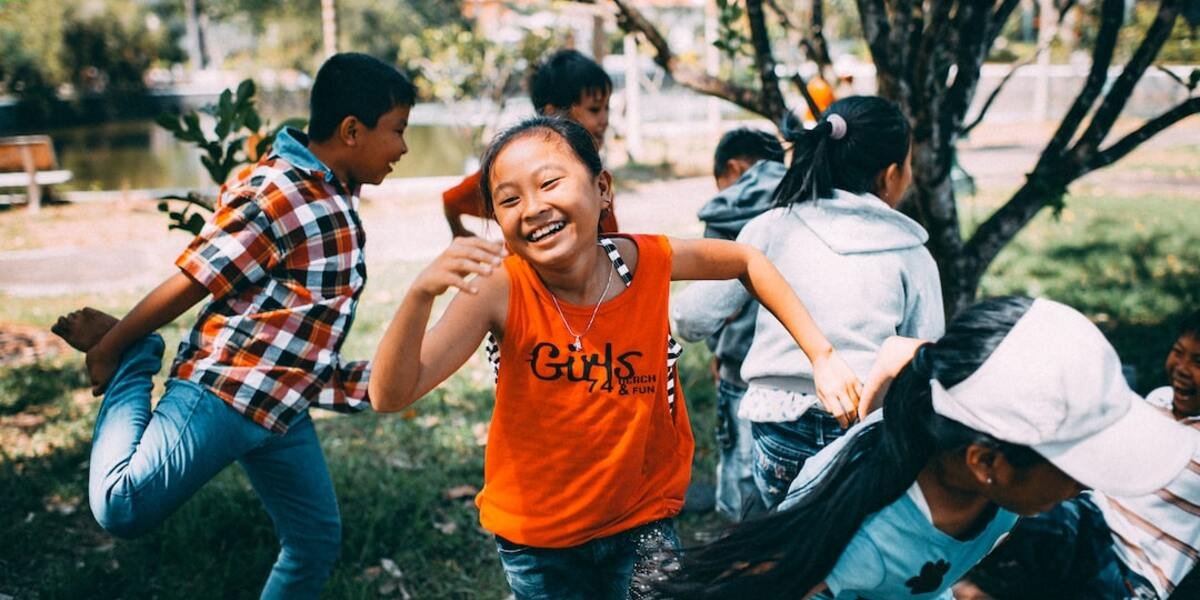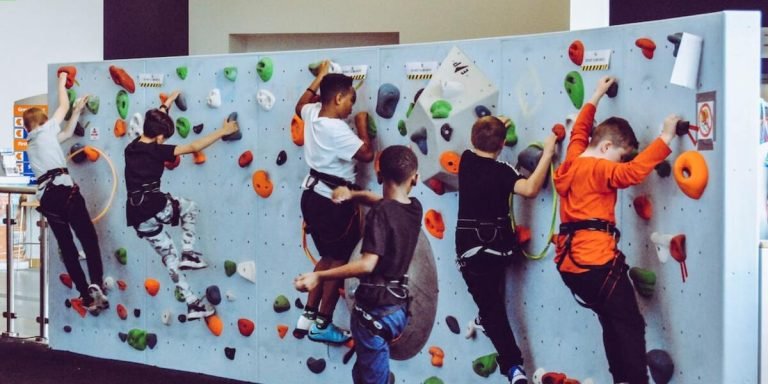Hip Pocket Learning: A Modern Approach to Childhood Education
The digital age has brought about numerous changes, notably in the field of education. A compelling example is “hip pocket” learning, an innovative approach that helps children acquire knowledge through experiencing and doing things themselves rather than rote memorization.
With hip pocket learning, we are shifting towards Experiential Learning or Activity Based Learning realm; a method known for its effectiveness compared to traditional techniques. This promising strategy facilitates understanding by engaging the child’s senses leading to more meaningful educational outcomes.
Did you know?
Did you know? Hip Pocket Learning gets its name from impromptu, informal teaching moments that can fit into a “hip pocket,” utilizing everyday situations to encourage children’s cognitive development.
Understanding the “Hip Pocket” Skill in Experiential Learning
Experiential learning, a cornerstone of effective childhood education in 2023, has brought to light the concept of ‘hip pocket’ skills. These are innate abilities or natural talents that kids may not realise they possess until an opportune moment presents itself during hands-on activities. In essence, it’s like having a tool tucked away safely in your hip pocket – you might forget about its presence until there comes a time when it is needed.
The exciting element with this form of education is witnessing children unexpectedly discover their “hip pocket” skill during activity-based lessons. It could be anything from excellent problem-solving capacities to extraordinary artistic flair; these untapped potentials remain hidden jewels waiting for experiential learning situations to reveal them.
The Role of Quick, Impromptu Training Sessions
Experiential learning or activity-based learning has become the cornerstone of modern childhood education. In this educational approach, “hip pocket” takes center stage as a critical and agile skill that can be leveraged to conduct quick, impromptu training sessions.
The significance of ‘hip pocket’ becomes clear in today’s fast-paced world where timely knowledge transmission is essential. It refers to swift teaching moments which educators utilize when they find an unexpected opportunity during the course of regular classroom activities or daily interaction with children.
These momentary yet power-packed instructional sessions aim at bringing relevant issues to light and fostering socialization skills among youngsters. While formal lessons have their place in holistic development, these hip-pocket opportunities serve as creative pit-stops for real-time understanding and application-oriented learning.
For instance, imagine kids playing on swings under teacher supervision during recess time; suddenly one child pushes another trying not overtake him – presenting herself an unplanned but valuable chance for embarking onto a ‘Hip Pocket’ session about respecting others space.
Bypassing elaborate lesson planning procedures often associated with curriculum-aligned instruction methods – teachers stepping into ‘Hip Pocket’ mode bring forward spontaneous learnings from available situations without the need for pre-set resources– making it Academia’s equivalent version of life tossing lemons!
Researchers praise such techniques primarily because younger minds resonate well when teachings correspond directly with observable scenarios happening around them – ultimately promoting enhanced cognitive abilities while also instilling problem-solving instincts within learners from early age itself.
Maximizing Teachable Moments in Field Environments
To truly harness the effectiveness of experiential learning, we must become experts at seizing teachable moments whenever they occur. These spontaneous instants are known as “hip pocket” opportunities – a chance to introduce meaningful lessons beyond what’s bound by textbooks or lesson plans.
In field environments like playgrounds, camping trips, nature walks, or casual strolls around your community park, you can spot and effectively use these hip pocket opportunities by knowing what to look for. Here’s how:
Start With Observation: Pay attention to children’s interaction with their surroundings during outdoor activities. Keep an eye out for instances where curiosity piques – it might be about insects crawling on leaves or why swings move back and forth. Each question generates endless chances for organic exploration that is both fun and educational.
Bring Out The Questions: When a child displays interest in certain elements within his/her environment, ask thought-provoking questions that enhance critical thinking skills rather than straight-up providing answers which can otherwise suppress creative imagination in favour of predetermined responses.
Implementing “Hip Pocket” Techniques in Activity-Based Curriculums
Hip Pocket techniques, a term well-received in the field of childhood education, are garnering attention for their unique approach to enrich activity-based learning. The beauty lies in its simplicity and flexibility where educators can adapt it into any aspect of the curriculum without extensive planning or resources. This year 2023, let us delve deeper into how this technique is revolutionizing contemporary pedagogical practices.
For parents and caregivers unfamiliar with hip pocket teaching methods – they consist primarily of spontaneous instructions or activities that teachers utilize whenever they spot an unscheduled moment during class hours. These “in-the-moment” opportunities provide children a break from routine tasks while imparting valuable lessons simultaneously creating an optimal environment for experiential learning.
Moreover, these impromptu sessions make room for creative thinking and problem-solving prowess among young learners as it’s often based on real-world context rather than structured textbook scenarios making them more relatable . So if you’re considering incorporating Hip Pocket strategies to your child’s educational journey, remember; there isn’t a one-size-fits-all formula – feel free to tweak per situation since what matters most is providing hands-on experiences which foster curiosity-led exploration over mere passive content absorption.
Adapting Traditional Lesson Plans for Active Engagement
Teachers and educators worldwide recognize the importance of engaging students actively in learning processes. The age-old concept of ‘chalk and talk’ has slowly been replaced by more interactive, student-centric methodologies like “Activity Based Learning” (ABL) or Experiential Learning. One such contemporary teaching method that has gained momentum is incorporating “hip pocket” techniques into lesson plans.
The term “hip pocket,” figuratively refers to strategies teachers have up their sleeves for spontaneous facilitation, shifting away from rigidly structured lessons towards dynamic interactions with learners. This flexible approach encourages children’s curiosity, prompts them to ask questions and explore ideas—leading them on an exciting journey of discovery rather than spoon-feeding facts.
Adapting traditional lesson plans for active engagement using hip-pocket methods often involves rethinking how we view education; it requires teachers not merely as information dispensers but effective facilitators initiating thought-provoking discussions amongst youngsters fostering a conducive environment where they learn through practical experiences – observing, questioning, doing!
Firstly one might incorporate spontaneity within classroom dynamics: consider setting aside time each day when kids lead the way! Maybe discuss topics relevant at present or something recently discovered playing outside? These informal discussion periods can ignite young minds since what interests them leads this dialogue fuelled interaction promoting collaborative learning, problem-solving abilities while enhancing social skills simultaneously!
Strategies for Encouraging Spontaneous Student-led Initiatives
In an era where student-led initiatives are securing a firm spot in the educational framework, employing strategic “hip pocket” techniques can be particularly effective. As educators and parents striving for quality education, these measures aid us not only to engage children but also empower them.
The first strategy involves establishing a conducive environment that fosters creativity. Make your classroom or home space an idea nurturing ground where students feel encouraged to share their thoughts freely. This could mean painting walls with interactive and stimulating themes or maintaining open spaces that inspire movement-based activities.
Next comes recognizing individual interests and abilities which serves as another potent hip-pocket measure in encouraging spontaneous activity-based learning experiences. Encourage hobbies like drawing, crafting or even coding & robotics from early on formulating tasks around their interest areas increases participation rates significantly.
Fourthly, encourage healthy competition by organizing regular group challenges focused on problem-solving skills applied based on the curriculum learned so far — giving our young minds hands-on experience with real-life scenarios they might face later.
Measuring the Impact of “Hip Pocket” Lessons on Learner Outcomes
“Hip Pocket” lessons are the unsung heroes in the realm of activity-based learning. These deliverables, designed to fit into a metaphorical hip pocket due to their concise nature and on-the-go access, have been significantly transforming educational outcomes for students.
What makes “Hip Pocket” lessons so unique is that they pivot away from traditional classroom methodologies towards experiential learning. Remember how we learn best when we’re immersed? That’s exactly what these lessons seek to do!
They involve children directly with tasks or activities linked inherently to real-life situations – making it an effective way for young minds not just understand but also retain information longer.
In 2023 as we navigate through new age pedagogies, measuring impact becomes crucial in understanding efficacy and learner progress. How does one measure effects though? Simple – by observing behavioural changes post sessions; looking at knowledge retention rates over time; considering student engagement during session; even feedback given by parents could be instrumental here.
Remember this: Learning should never feel like a chore – especially not for our youngsters who are only beginning their journey with education. Activity based “Hip Pocket” lesson plans represent major strides towards achieving this objective: make education meaningful yet enjoyable simultaneously! So get onboard with us today as we further demystify its benefits together.
Assessing Competency Through Action-Oriented Tasks
In experiential learning or activity-based learning scenarios, assessing competency is often achieved through action-oriented tasks. These task-focused assessments have become a cornerstone strategy in childhood education today.
Primarily, action-oriented tasks are designed to challenge learners with practical problems that require ‘hip pocket’ skills – abilities they’ve developed and can readily access at any time. For children, these could be items like collaboration techniques, decision making capabilities or creative-thinking processes learned from prior hands-on experiences.
The intriguing part about these sorts of evaluations revolves around their real-world applicability. Instead of merely evaluating textual knowledge reproduction capacities as traditional testing methods do predominantly; such an evaluation approach focuses on the child’s ability to integrate what they know into acting upon real-life situations effectively.
Gauging the outcomes accurately requires a carefully planned assessment process that might include several interconnected stages:
1) Objective Identification: Clearly defining competencies aimed for developing.
2) Task Design: Creating relevant activities challenging enough so that only by applying specific skills would lead them towards successful completion.
3) Observational Analysis: Closely monitoring every child during task execution gives indispensable insights into how well each learner can utilize their skills.
Analysing Behavioral Changes Post-Experiential Activities
In the realm of childhood education, ‘hip pocket’ lessons have taken center stage. These experiences are designed to engage learners in a more hands-on manner, allowing them to gain knowledge by doing rather than simply listening or reading. This form of experiential learning can bring about notable changes in their behavior and overall learner outcomes.
Firstly, it is important to understand what behaviors we aim at modifying through these activities. A primary objective could be instilling curiosity or eagerness towards learning – an attribute that assists future educational pursuits significantly.
Many educators agree that post-experiential activity analysis shows enhanced engagement during classes_. Learners who partake in such activities tend to show higher levels of interest and participation as compared with those engaged only theoretical teaching methods.
Moreover, children exposed consistently to ‘hip pocket’ lessons typically exhibit better problem-solving skills. They efficiently apply learnings from real life situations presented during the activity sessions into other related topics thus showing improved cognitive capabilities along with resourcefulness.
Camaraderie among peers often enhances due these shared involvement too which indirectly adds social-emotional advantages for child development crucial for long-term personality forming aspects like leadership traits and empathy towards others.
Lastly but importantly enough there’s also increased resilience noticed amongst this group- another valuable trait thriving well under failure-prone circumstances encouraged via experiential learning.
Conclusion
In summary, ‘hip pocket’ learning has indeed revolutionized modern childhood education. It’s a tool that supports continuous growth and imaginative thinking – all in the convenience of your own hip pocket. As daunting as it may seem at first glance, navigating this new learning landscape can be surprisingly rewarding with the right resource.
As you continue to chart out educational strategies for your young learners, remember that our website is chock-full of invaluable resources designed specifically to support parents and educators alike in their journey. Whether you’re searching for practical tips or looking for guidance on complex topics like “hip-pocket” principles, we’ve got every corner covered! So go ahead—make yourself comfortable and browse around—you never know what nuggets of wisdom await discovery!







